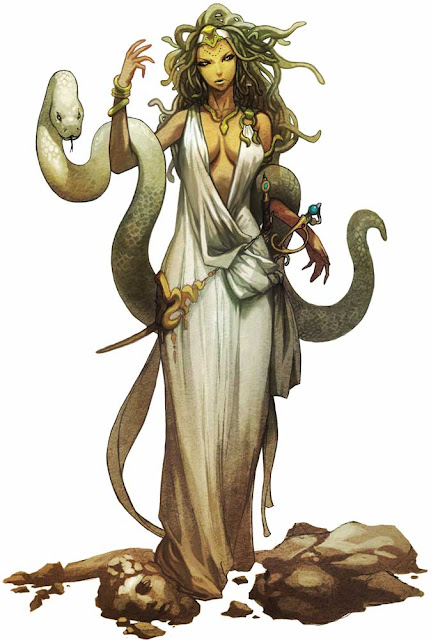In Greek mythology, a Gorgon is a mythical creature portrayed in ancient Greek literature. While descriptions of Gorgons vary across Greek literature and occur in the earliest examples of Greek literature, the term commonly refers to any of three sisters who had hair made of living, venomous snakes, as well as a horrifying visage that turned those who beheld her to stone. Traditionally, while two of the Gorgons were immortal, Stheno and Euryale, their sister Medusa was not and she was slain by the demigod and hero Perseus.
The large Gorgon eyes, as well as Athena's "flashing" eyes, are symbols termed "the divine eyes" by Gimbutas (who did not originate the perception); they appear also in Athena's sacred bird, the owl. They may be represented by spirals, wheels, concentric circles, swastikas, firewheels, and other images. Anyone who would gaze into their eyes would be turned to stone instantly.
Tales and Mythology where you can find all tales and mythologies on the world
